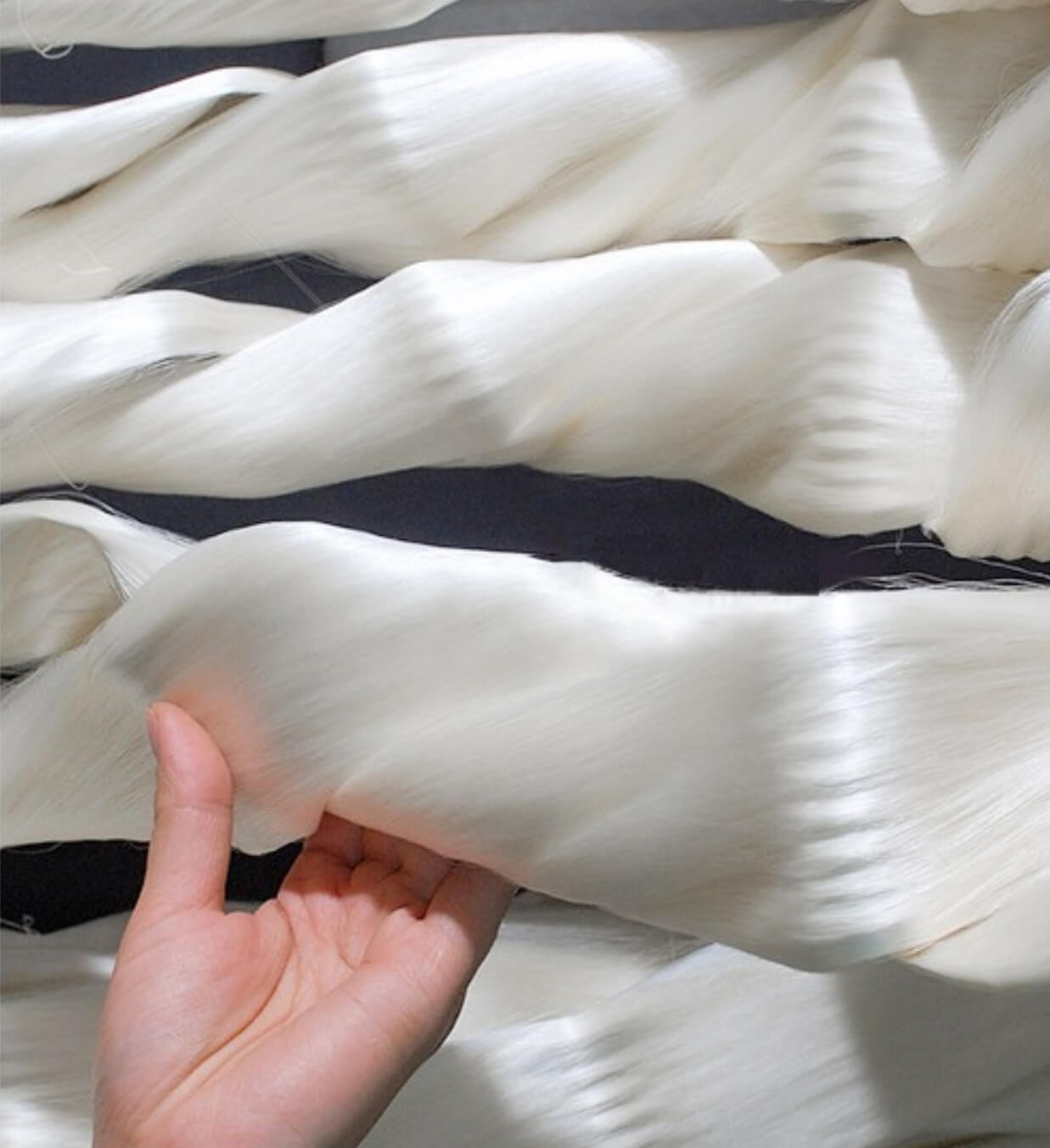The Story of Silk
Once upon a time, there lived a beautiful yet artful empress in the Imperial Palace. We called her Empress Leizu. She is wife of the great Yellow Emperor in China.
On a breezy afternoon, Empress Leizu sat down for her cup of tea under the mulberry tree.
She lifted the cup to her lips. Suddenly - Plop - a tiny object - pasty white in colour dropped into her drink from the swaying branches of the tree overhead.
"Oops!"
The empress lowered her cup in surprise. She was about to cast it aside, but enchanted by what she saw.
“Oh! what is this?”
"I have never seen something like this before”
Curious to find out more, Empress Leizu picked the object from her tea and noticed it was exceptionally soft.
The silky object soaked in her hot tea had softened further and thin strands had started to come out of it. The thin strands sparkled and shimmered in the sunlight.
The empress made a pull on a loose strand. Gingerly, she began winding the strand around her finger and to her delight, the delicate strand remained intact.
She passed the strand to her maid and asked the maid to keep pulling at it, slowly unraveled it until it stretched the length of her garden, which is over 600 meters.
“Wow! This is marvellous!”
Intrigued, Empress Leizu decided to find the source of this silky object. She went around the mulberry tree to look for more fallen cocoons in her garden.
She gathered the cocoons to unravel, and worked the strands into cloth.
When she finished, she had woven a soft and shimmery fabric that was supple to the touch, and yet, exquisite.
“This is so delicate…so elegant”

Excited by her discovery, the empress didn’t stop there. She decided to study the subject further.
She spent the next few weeks examining the silk-moths. She found that female silk-moths lay around 300-500 eggs at any one time. These eggs eventually hatch to form silkworms. The silkworms then feed continually on a huge amount of mulberry leaves. It will take around 6 weeks for them to grow completely, at which time they stop eating and begin to raise their heads - that’s when they’re ready to spin their cocoon.
After studying the silkworms for several weeks, Empress Leizu came to the conclusion that the worms ate nothing but only mulberry leaves.
Empress Leizu decided to tell her husband, the Yellow Emperor all about her amazing discovery.
“Oh my...this is so soft and superlative.” said Yellow Emperor, while touching the soft and shimmery fabric she has woven.
“We can produce it right here in our country. Imagine the boost it will give to our trade!” said Empress Leizu.
Who First Made Silk
Empress Leizu persuaded the Yellow Emperor to procure a grove of mulberry trees so she could domesticate these silkworms.
Soon, she also invented a reel to spin large quantities of cocoon strands into thread, and also built a loom to weave thread into cloth.
Then she passed on what she learned to her entourage, and the sericulture tradition - process of silk farming was born.
From a disrupted afternoon tea, the empress’ new discovery became intertwined with China’s next 5000 years of history. From then on, Empress Leizu also became known as the goddess of silk.
History of Silk
Mulberry Silk was an instant hit. Soft but strong, light and elegant, mulberry silk is very adaptable and possesses many virtues that make it extremely valuable.
It keeps you cool in the summer and warm in the winter. It wicks moisture. And dyed silk-woven items hold their color for centuries.
In the first 1000 years of its discovery, silk was produced exclusively for the emperor and his close relations or as gifts to dignitaries.
In time, as silk production increased, other classes of society were allowed to own silk as well. However, specific colors, accessories, and motifs of the silk worn held social importance and formed an important guide of social class during the Tang dynasty.
Yellow, for example, was reserved for the emperor.
Men from different military ranks also sported different silk headpieces to distinguish themselves.
Other than clothing and decoration, silk was used to make musical instruments, archery bowstrings, fishing lines, and the world’s first (luxury) paper.
During the Han Dynasty, silk could even be used as a type of currency in trade.
Silk quickly became one of the most sought-after fabrics in the world, and many countries were extremely eager to trade for it.
This rapid growth in popularity led to the rise of the Silk Road.
Although silk products could pass beyond China’s borders, Chinese authorities forbade the secrets of sericulture from leaving the empire.
Anyone caught smuggling silk moths or eggs was executed.

The History of The World's Most Luxurious Fabric
The rise of new imitation fabrics such as nylon and polyester have reduced the prevalence of silk throughout the world. However, the ideals of the orient that lie within silk have never faded.
Silk is timeless.
After 5000 years, silk has woven itself through China’s dynasties and made its way into the modern luxury fashion.
Today, silk is an international commodity, yet remains a symbol of the ancient Chinese civilisation.
China became the hub of silk production and flourished from its export.
And today China produces almost 80 percent of the silk worldwide.
And it all started with a disruptive afternoon tea!




